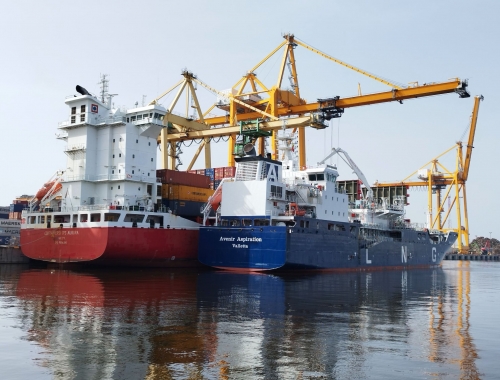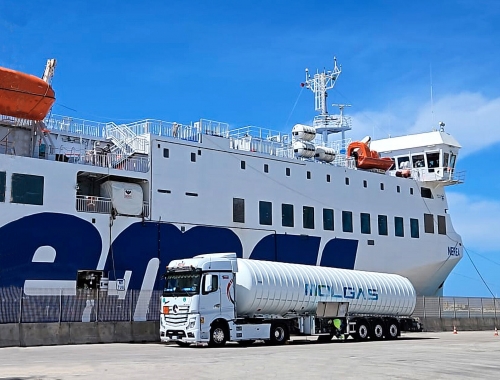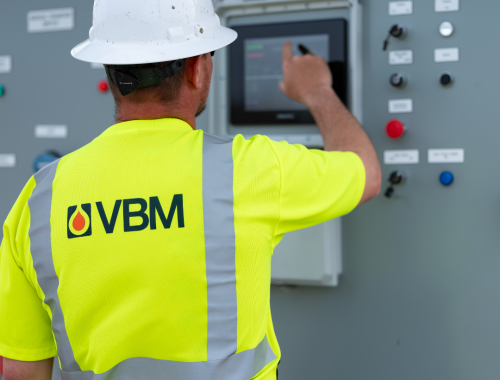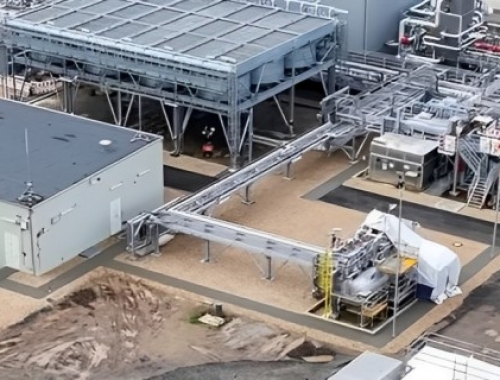Acorn CCS leads efforts to decarbonise Scottish industry
SUMMARY
Storegga expects to take a final investment decision on Acorn in early 2023.
By Joseph MurphyIndustrial interest in carbon capture and storage (CCS) technology in the UK has surged this year, following a sharp rise in CO2 emission costs and the government’s launch of a staged programme to decarbonise the country’s largest industrial clusters, Nick Cooper, CEO of CCS developer Storegga, tells Gas Pathways.
Storegga took control of the Acorn CCS development in Scotland last year through the acquisition of its lead developer Pale Dot Energy. Since then it has brought on board oil firms Shell and Harbour Energy as equal-equity partners in the venture, and has awarded a front-end engineering design (FEED) contract to London-based Carbon Clean.
Based at the St Fergus gas terminal in northeast Scotland, Acorn will take CO2 emissions from Scottish industry and pump it offshore using existing gas pipelines, for storage under the North Sea bed in depleted gas reservoirs. It is expected to handle 6.0-6.5mn metric tons/year of CO2 at maximum capacity.
Cooper, a geophysicist by education, who served as head of former London-based oil and gas producer Ophir Energy before joining Storegga, points to a surge in industry’s interest in CCS in recent months. This is partly the result of higher CO2 costs in the UK. Post-Brexit, the UK kicked off its own emissions trading system (ETS) in May, and prices have been at a premium to those under the EU ETS.
Another important development this year was the government’s launch of its sequencing programme to decarbonise the UK’s largest industrial clusters. In August, the government announced it had shortlisted five CCS projects for the programme’s first phase, which aims to have two such schemes up and running by the mid-2020s.
“A lot of CO2 customers have stepped up that had been hesitant at the end of last year,” Cooper says, noting that Acorn’s developers are now at the early stage of negotiations with the parties.
Ineos, the owner of the Grangemouth refining and petrochemicals complex some 40 km from Edinburgh, signed a memorandum in early July to use Acorn for its CO2 storage needs. Grangemouth will be connected to Acorn’s facilities at St Fergus via pipeline. ExxonMobil expressed its interest later that month.
Acorn is expected to handle CO2 from nine primary emitters. In light of interest demand, the project’s developers have raised their ambitions. Earlier this year Storegga envisioned the project handling only 5mn mt/yr of CO2, but now expects its capacity to come to between 6.0-6.5mn mt/yr.
“All systems go”
Acorn is the most advanced out of all the UK CCS projects. Storegga is therefore hopeful it will make the cut in the sequencing programme’s first phase. The winning candidates will be announced in late October.
“After that it should be all systems go,” Cooper says. “Not only are we the most advanced of the UK projects, in that we are already at the FEED stage, but we have other fundamental advantages. So we hope to be in the front row.”
Storegga expects to take a final investment decision on Acorn in early 2023, and launch commercial operations in phases between late 2025 and late 2026.
There are an ever-increasing number of CCS projects emerging in the offshore zones of northwest Europe. One that has gained a lot of attention is Northern Lights off the coast of Norway. The Norwegian government approved an FID taken by project partners Equinor, Shell and TotalEnergies in December last year.
Acorn has an edge over Northern Lights as it will make use of depleted gas fields in the UK North Sea. Northern Lights in comparison will use greenfield saline aquifers, meaning that all of the infrastructure will have to be built from scratch.
Acorn is also notably larger in scale. Initially, Northern Lights will store only 1.5mn tonnes per year of CO2, rising to 5mn tpy during a second stage. However, citing increased demand from industrial customers across Europe, the Northern Lights group announced in early September that would consider a larger capacity than this.
How to make CCS pay? Cooper believes that most emitters will be incentivised to use CCS facilities once ETS prices climb to between €65 to €110/metric ton of CO2. CCS costs will be highest in the initial phase, before economies of scale kick in. In order to avoid penalising early users, the government is therefore looking to introduce contracts for difference (CfD), similar to those introduced to kickstart offshore wind energy in the UK. CfDs essentially bridge the gap between levelised costs and actual operating costs. The government held consultations on CfDs for CCS over the summer.
Storegga is also targeting opportunities in the US Gulf Coast area, the home of the US’ largest industrial hubs and with substantial CO2 storage potential offshore. The company set up a 50:50 joint venture with local explorer Talos Energy to advance projects in June.
Hydrogen aspirations
At a later stage, Storegga wants to convert natural gas arriving at St Fergus into hydrogen, using its CCS capacity to produce the fuel cleanly. The UK introduced its long-awaited hydrogen strategy in August, although there is still a lot of work to be done in hashing out fiscal terms and a business model for the fuel. The government is expected to clarify those terms in the first half of next year.
Storegga sees itself as “hydrogen agnostic”, viewing potential in both blue and green hydrogen. But given Acorn’s CCS capabilities and the access to North Sea gas supply, blue hydrogen is the obvious first focus. With its partners, it has been discussing the creation of a 200-MW hydrogen plant at St Fergus, with a potential expansion to 800 MW at a later stage.
While hydrogen can be used in pure form locally, for example in mobility, Storegga sees the real potential in blending hydrogen into the national gas grid.








